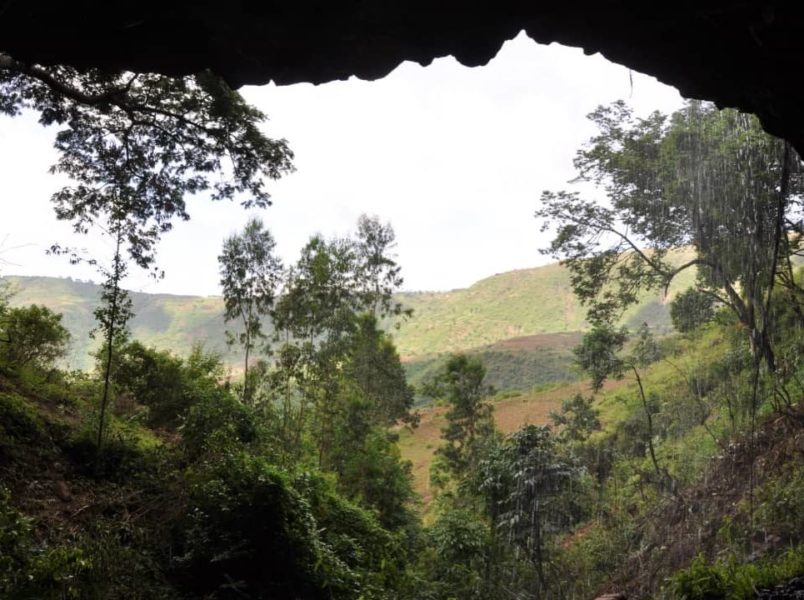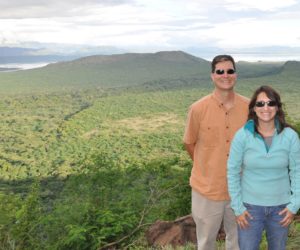Thrive
Discoveries by USFSP anthropologists change views of early human life

A pair of University of South Florida St. Petersburg anthropologists have transformed how the global scientific community perceives the lives of early humans, thanks to groundbreaking DNA analysis from a 4,500-year-old skeleton they found buried deep in an African cave.
USFSP archaeology power couple Kathy and John Arthur led the studies, with Nature recently publishing their latest findings, titled “Ancient DNA reveals deep population in sub-Saharan African foragers.” The Arthurs’ discovery and research, combined with the subsequent first-of-its-kind DNA extraction, shape a fascinating story of how our ancient ancestors lived, traveled, and even found love.
Anthropology Professor Kathy Arthur led an interdisciplinary team of 44 researchers on the innovative project, which began with the remarkable and unexpected 2012 discovery of an ancient skeleton buried in an Ethiopian cave. The Arthurs named the early Ethiopian man Bayira, or “firstborn” in the Gamo language of the native people who inhabit the area.
“We were looking for caves because caves have good preservation,” said Kathy Arthur. “It protects items from the elements.”

John and Kathy Arthur in the southern Ethiopian highlands, where ancient humans genetically adapted to high altitudes and low oxygen.
Kathy and her husband, also an anthropology professor at USFSP, began working in Ethiopia in 1995. Many scientists refer to Ethiopia as the cradle of humankind, with the fossilized remains of the human species’ earliest ancestors – scientists estimate the Ethiopian skeleton known as Lucy is 3.2 million years old – found throughout Africa’s oldest independent nation.
The original focus of the Arthurs’ studies was early food production, and the duo enlisted the help of the local community in the highlands of southern Ethiopia to point them in the right direction.
“Really, to try to discover what sites were important in their heritage – and caves were important,” said Kathy. “Not only in their heritage but in their current religious beliefs.”
The locals, who believe the first humans originated from the underground shelters, gave the couple permission to excavate the Mota Cave. Excavation to study the origins of early food consumption habits began in 2012. With just days remaining on the trip, John said the archaeologists discovered a human pelvis buried under a large rock cairn.
The team worked feverishly to uncover the rest of Bayira before returning home, not an easy feat when traveling back and forth to the secluded cave, perched atop the highlands, took hours. Eventually, the Arthurs uncovered Bayira laid on his side, his head placed on a pillow stone. John called the position of the 4,500-year-old skeleton “compass-like,” with his head facing the north, feet to the south and his face looking to the west.
The Arthurs found Bayira buried with ancient obsidian tools and a quartz crystal placed atop his body. The local population was unaware ancient relatives buried the body deep in the already revered cave.
In 2013, the Arthurs invited Dr. Jay Scott, a specialist in Mesolithic burials at Cambridge University, to look at their prized discovery. Scott relayed recently circulating ideas regarding extracting ancient DNA from the petrous, or ear bone, to the couple. While not scientifically confirmed or published at the time, there was hope.
The Arthurs received permission from the Ethiopian Ministry of Culture to export and study the bone. After years of experimental DNA testing, an international team became the first to ever sequence ancient African DNA.
The resulting information came as a shock to the researchers. Bayira did not exist in an agricultural period, and he was much older than previously thought.
“He was definitely a hunter and gatherer, and he was adapted to the highlands,” said Kathy. “Which was a surprise.”
Kathy explained that previous research suggested humans did not call the highlands home until thousands of years after the time of Bayira. Anthropologists believed hunter-gatherers congregated near lakes and throughout the Rift Valley, much closer to sea level and vital natural resources. The Mota Cave sits at an altitude of about 7,500 feet, and the Arthurs said the dry, cool climate helped preserve the skeleton.
“It had never been done before,” said John. “People would always say, ‘you can’t get ancient DNA from an African skeleton because the climate is too harsh.”
Unlike much older discoveries of fossilized remains, Bayira’s DNA matched that of the local population, and the Arthurs said he was a direct ancestor of the current humans.
“He was a full human being,” said Kathy. “He could be on this Zoom meeting, and you wouldn’t even know,” added John with a laugh.
Kathy said a key finding from the DNA sequencing proved that Bayira and his relatives genetically adapted to a high-altitude environment with less oxygen over a long period. That finding, she said, directly contradicts previous theories about where ancient humans of the era carried out their lives – and for how long.
An isotope study on Bayira’s bones proved he moved between the highlands and lowlands to gather wild African grasses to complement his diet of meat and starches, and his DNA showed he was likely lactose intolerant. The Arthurs said the groundbreaking DNA sequencing also lit a fire in other scientists to locate and study the petrous bones from ancient skeletons.
The latest study, published in Nature, examined DNA extracted from the petrous bones of six skeletons buried in Malawi, Tanzania and Zambia who lived between 18,000 and 5,000 years ago. The study also re-analyzed Bayira. While scientists previously believed that hunter-gatherers would stay in small, territorial areas, the innovative DNA sequencing proved that many traveled long distances in the pursuit of a better life.
Scientists now know that as far back as 50,000 years ago, people from varying regions of Africa moved to different areas and developed alliances to trade and share information. These ancient social networks enabled ancient humans to not only survive but thrive.
“They were going a long way,” said Kathy.
“Meeting each other, having offspring and interacting in a very different way than we previously thought,” added John.
“A hallmark of being human is that we like to travel. We’re a curious species, and we want to see what’s on the other side of the hill, and that’s what this study shows.”

Kathy Arthur recently received a grant to continue studying ancient civilizations in Ethiopia.
Kathy has recently received a grant to go back to the area to study its forests, also considered sacred by the local inhabitants. The forests contain ancient defensive architecture and burial grounds, and she plans to discern the age of the woodlands and whether ancient civilizations built the structures to defend the area, or if the forest grew around them. John said they also hope to study larger, newly discovered caves that could possibly contain the next Bayira – or lead to another scientific breakthrough.
The Arthurs said that 11 USFSP students accompanied them on fully-funded trips to study early civilizations in Ethiopia, and the significance of groundbreaking global research emanating from the smaller campus is not lost on the husband and wife duo.
“Don’t underestimate our campus because it’s small,” said Kathy. “We’re not the only people making international news on the St. Pete campus.”







